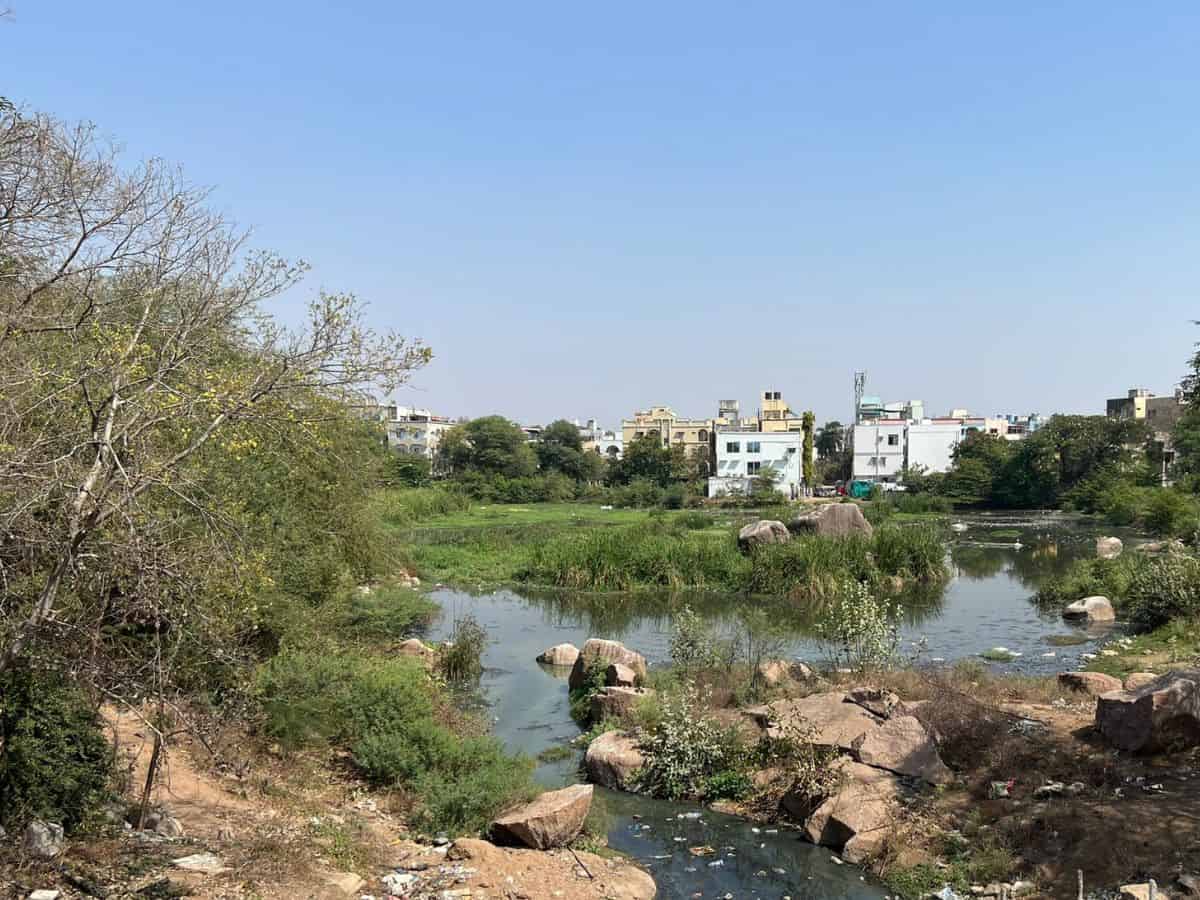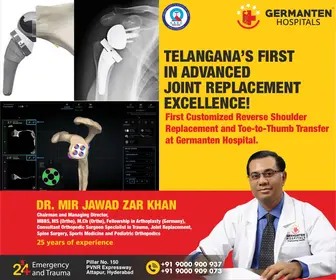
By Lubna Ludheen and Laldinmoi Pangamte
Even as countries across the world must live with and adapt to the negative impacts of climate change, availability and access to water resources and a nation’s economic growth and food security have become more intertwined than ever before. India has been identified as an extremely water stressed country, using more than 80% of its renewable water supply for irrigation, livestock, industry, and domestic needs (WRI Aqueduct Water Risk Atlas, 2023). Over 40% of India’s land area is taken up for agriculture activities, making the agriculture sector a major consumer of water resources. The Ministry of Jal Shakti pointed out that in 2022, agriculture activities account for 87% of the Annual Groundwater Extraction in India.
Recognising the pressing need for water conservation, various initiatives have been taken by the central and state governments to accelerate water conservation efforts across the country.
Telangana State is located on the Deccan Plateau, with much of its land arid. Agricultural activities are carried out in about 60% of the total land in Telangana, making the agriculture sector the backbone of Telangana’s economy. Since agricultural development is intricately linked to irrigation, water resource management and conservation remains a significant policy concern for the government.
The Telangana government in 2015 launched Mission Kakatiya, a flagship water conservation initiative aimed at rejuvenating minor irrigation tanks across the state. Drawing inspiration from the Kakatiya dynasty’s historical irrigation practices, the programme seeks to restore over 46,000 tanks and lakes, ensuring sustainable water management. While Mission Kakatiya has shown promising results, such as increased agricultural income and improved groundwater level, it raises a critical question: Has it truly transformed rural Telangana, or do challenges remain that need to be addressed?
The rationale
Tank irrigation has been a cornerstone of Telangana’s agricultural heritage, particularly during the Kakatiya dynasty (12th−14th centuries). The Kakatiyas constructed numerous tanks, such as Ramappa and Pakhal, which played a crucial role in supporting agriculture and sustaining rural communities. However, over the centuries, these traditional water bodies faced neglect, encroachments, and urbanisation, leading to their decline.
By 2014, Telangana was facing the issues of severe drought, farmer distress, and groundwater depletion. The urgent need for intervention led to the launch of Mission Kakatiya to rejuvenate tanks across the state.
A key aspect of Mission Kakatiya is community participation, ensuring sustainable management and maintenance of these water bodies. This collective effort aims to restore the ecological balance, improve agricultural productivity, and enhance rural livelihoods in Telangana.
Successes and achievements
In 2019, NABCONS found a 36%–39% increase in fish yields, particularly species like Rohu, Katla, and Mrigala, due to prolonged water retention in restored tanks. Another study (IRMA/IWMI, 2017) reported that post-Mission Kakatiya, the area under irrigation expanded by 196% in Kharif and 160% in Rabi seasons, leading to better water availability for aquatic ecosystems. Also, a study by the University of Michigan in 2019 found that desiltation of tanks reduced artificial fertiliser usage by 36%, leading to lower chemical runoff and improved water quality, which contributed to ecosystem revival.
Also, household agricultural income in tank ayacut (area served by an irrigation project) regions increased by 78.5% due to higher yields and expanded irrigation (NABCONS, 2019). It was also found that farmers in rehabilitated tank areas had more irrigation days and a higher number of tank-based livelihoods compared to non-rehabilitated areas (Tata Center for Development, Chicago University, 2018).
Challenges and shortcomings
One major challenge that has been identified was that while desiltation was beneficial, silt disposal remained a major challenge. Also, while silt application in fields improved crop yields, this was not uniformly implemented. Other issues and challenges that have been pointed out include: re-encroachment of rehabilitated tanks, reducing their effectiveness; lack of follow-up maintenance, resulting in structural issues such as breaches in bunds and leakage, and; underutilisation of Water Users Associations (WUAs) and limited engagement with local communities. And extreme rainfall events could cause overflows and breaches, threatening tank infrastructure (Tata Center for Development, Chicago University, 2018).
Importantly, the Telangana State Groundwater Department has identified that increased groundwater extraction, combined with erratic rainfall patterns, posed long-term risks to the Mission’s effectiveness. As per the latest figures available from the government (March 31, 2023), 22,044 tanks have been restored under Mission Kakatiya, which seem far below the target of restoring 46,000 such water bodies and tanks within five years of the launch of the Mission.
Way forward: Policy recommendations
To ensure the long-term success of Mission Kakatiya, several policy recommendations can be considered. Firstly, it is crucial to establish a dedicated monitoring body to oversee tank health, by conducting regular inspections, maintenance, and addressing any issues related to the tanks. There is also the need to strengthen local governance for sustainable water management. Empowering Water Users Associations and promoting community-led initiatives can ensure active participation and ownership among local stakeholders. Adopting sustainable desilting practices is another key recommendation. When desilting activities are linked with agroforestry and soil health programmes, benefits are maximised as they improve both water storage capacity and soil fertility. Finally, it is vital to balance large-scale projects with local solutions. Mission Kakatiya should complement, not replace, rainwater harvesting and micro-irrigation schemes.
Promising initiative
Mission Kakatiya has shown mixed outcomes. While it is a promising initiative that has improved water storage, agricultural productivity, and rural livelihoods, there remain challenges in the execution and sustainability of targets. Long term success can be ensured by addressing issues such as improper silt disposal, re-encroachment, and weak community participation. To boost efficiency and ensure better management of water resources, greater efforts need to be made to engage the community, strengthen local governance, and harness the potential of modern technologies like GIS mapping and IoT-based monitoring specifically designed for India.
Mission Kakatiya has the potential to be a viable model for decentralised water management in India. By learning from its successes and addressing its challenges, similar projects can be implemented nationwide to promote sustainable water conservation and rural development.
Lubna Ludheen is a Research Associate at CDPP. She has a Master’s Degree in Public Policy from Mount Carmel College, Bengaluru. Her interests lie in the fields of women and gender, sexual and reproductive health and rights, and sustainable development.
Laldinmoi Pangamte is a Copy Editor at CDPP. She has a PhD from the School of International Studies, JNU, New Delhi. Her research interest areas include good governance, inclusive and sustainable development, and global and national environmental protection.



